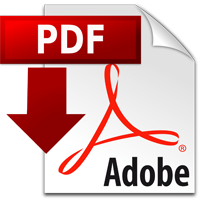Minutes March 24, 2023
Data Governance Council Minutes
Friday, March 24, 2023 2:00-3:00 p.m.
NAH 359, Montana Room
Members: Camie Bechtold, Tony Campeau, Chris Fastnow (co-chair), Alison Harmon, Ryan Knutson (co-chair), Terry Leist, Eleazar Ortega, Alicia Schroeder, Justin van Almelo, Leslie Weldon
Non-members present: Allison Crow (admin support)
-
Welcome and Introductions
-
Charge of Committee
- Co-Chairs Ryan and Chris laid out the charge as was stated in the agenda. Previous Data Governance meetings that have been held before focused more on high-level documents and policy review. While policy review is helpful and will be carried over, it was emphasized that strategic assets and investments, as well as utilization of data and the benefits of that data utilization, will also be focused on moving forward. The council will begin to prioritize and set up sustainable models.
-
General Responsibilities
- Discussion on what council members bring as strengths for data governance and how best to use their strengths
- Identification of what the council can do for the rest of the university, including
the following:
- Where support can go directly to the university;
- The value of why the council does what it does;
- Evaluation of risk for the personal information of students and our budgets (focus on the sense of security);
- How decisions are made has changed; and
- Governance versus stewardship and how stewards’ daily agendas need to align with day-to-day needs and benefit those who inform us.
- Regulatory compliance must remain a key factor.
- Critical Success Factors
- Data Governance needs to weave into the fabric of the university. It will change the culture, but it needs to meld in while it does so. There must also be culture change management.
-
Identification of Problem Areas
- Discussion about a type of problem and whether it signals a lack of data governance
- Loose action item: think about whether there is anyone who is not on the council that it would be beneficial to bring in as a guest or council member.
-
Workflow Plan
- Discussion and thoughts on the work-flow plan are as follows:
- Tony – The volume of data is much higher than it was in the past, which means security is very different. Maintaining balance in what we ask of the data stewards and protecting our reputation while giving guidance on strategy moving forward is key. The needs are different and dependent on applications, and management of those applications is critical. We need no limit on data while keeping control in place.
- Terry – The area of coverage is massive and needs to be more clearly defined. Implementation of priorities will need to be tackled, and that may include having guests or working groups involved in behind-the-scenes work. Both organizationally and on a small scale, consistency will be key.
-
Identified Problem Areas to Address
- Identified by Council Members:
- Chris – Provided an example that data flow can be difficult to track as a department may be dependent on another department for its data and may not comprehend the importance of that data flow. There is no process for how to begin collecting new types of data when requested, how to store that data, or how to get it out to where it is needed.
- Alison – The EPCF form for grant proposals and data could have new integration. How would the data collected that won’t be migrated and requires storage be managed?
- Camie – Focusing on the individual employee and how they learn to store data. Across campus, the general knowledge and understanding of data storage are clunky and inconsistent. Is there an appropriate way to address this when not managed by policy, and how will that change the culture for that?
- Tony – What is the proper way to give someone access to data? When do we give them access to everything, and when is that too much? Can we reduce risk by only giving them what they need, and not by giving them everything? How do we share and empower people and make them feel comfortable in their roles?
- Leslie – Billings is a smaller campus, which has a better day-to-day flow. We also
want to do more to help reduce risk.
- With all these problems identified, the question is, when do we start tracking them?
-
New Business
- Complacency is something to watch for, and if it exists, it will need to be combatted with further data education. Staff wearing varied hats can cause confusion. Across all campuses, the data environment needs to be mapped, enhancements prioritized, literacy on data across the campuses understood, noncompliance cases established, and policy set for data governance.
- As cases are tackled and we look back on the work plan, there needs to be a way to ensure things are still aligning.
-
Work Plan
- To keep the council alive, there will need to be a living document to track the work plan and its flow. Focus on repeatable steps to help educate, share, and find a consistent work and meeting flow. Coordinate high-level learning via tasks from data workers and stewards that will result in prioritizing. There is a need to find a route for influencing the culture throughout the different environments.
-
Thanks, and Meeting Wrap Up
The meeting concluded at 3 pm.
Action Items
-
- All: Review Enterprise Data Stewardship Policy
- All: Review the work plan from the last meeting and bring any suggested changes
- Chair: Review membership and suggestions from the meeting

